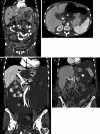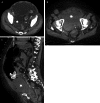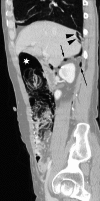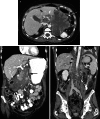The subperitoneal space and peritoneal cavity: basic concepts
- PMID: 26006061
- PMCID: PMC4584112
- DOI: 10.1007/s00261-015-0429-5
The subperitoneal space and peritoneal cavity: basic concepts
Abstract
The subperitoneal space and peritoneal cavity are two mutually exclusive spaces that are separated by the peritoneum. Each is a single continuous space with interconnected regions. Disease can spread either within the subperitoneal space or within the peritoneal cavity to distant sites in the abdomen and pelvis via these interconnecting pathways. Disease can also cross the peritoneum to spread from the subperitoneal space to the peritoneal cavity or vice versa.
Keywords: Anatomy; Peritoneal cavity; Subperitoneal space.
Figures











References
-
- Meyers MA, Charnsangavej C, Oliphant M. Meyers’ dynamic radiology of the abdomen: normal and pathologic anatomy. 6. Berlin: Springer Science + Business Media, LLC; 2011.
-
- Standring S, Ellis H, Berkovitz BKB. Gray’s anatomy: the anatomical basis of clinical practice. 39. Amsterdam: Elsevier Churchill Livingstone; 2005.
MeSH terms
LinkOut - more resources
Full Text Sources
Other Literature Sources

